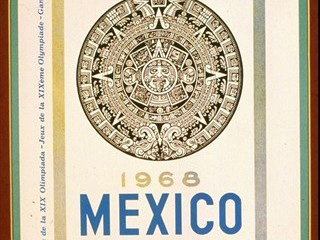
|  |  |  News Around the Republic of Mexico | August 2008 News Around the Republic of Mexico | August 2008  
Decaying Sites from Mexico Olympics Still Used
 Associated Press Associated Press
go to original


| | An offical poster from the 1968 Mexico Olympic Games on display at the IOC Olympic Museum in Lausanne, Switzerland. (IOC Olympic Museum /Allsport) | | |
Mexico City - The Olympic Rowing and Canoeing Course south of Mexico City was lauded as a miracle because of how fast and well it was built before the 1968 Olympic Games.

Almost 40 years after the once-pristine 7,200-foot long course was first used in rowing and canoeing competitions, graffiti covers the walls. Its canals are filled with dark water.

Despite its state, the course continues to be used by hundreds of people, including Mexico's Olympic rowing and canoeing team.

The course has received little maintenance in the past four decades and the same buoys used in 1968 remain. It is one of several Olympic sites that, despite their decay, are still widely used.

At the Olympic swimming pool, a barely recognizable Olympic Games logo still hangs above the entrance. Paint peels off the walls, but inside the pool, dozens swim up and down its eight lanes.

The swimming pool hosted swimming, diving and water polo competitions in 1968. It also was the site where 10,000 spectators saw Mexican swimmer Felipe Munoz win the gold in the 200-meter men's butterfly.

Now, about 18,000 people use it Monday through Saturday from 5 a.m. to 11 p.m, said Benjamin Esparza, the site's sports coordinator. "The people who come are as young as 1-year-old children and as old as an 83-year-old swimmer," Esparza said.

Unlike most crumbling Olympic sites, the Olympic stadium still stands preserved, its stone walls decorated with Aztec designs.

The stadium, with a capacity of 63,000, was where gold medalist Tommie Smith and sprinter John Carlos, who won bronze in the 200, caused an uproar by raising a black-gloved fist during the playing of "The Star-Spangled Banner."

The stadium, which is home to the National Autonomous University of Mexico's soccer team, has been maintained by a private foundation. Most other sites, including the Olympic swimming pool and rowing and canoeing course, are under the care of Mexico City's government. |

 |
|  |



